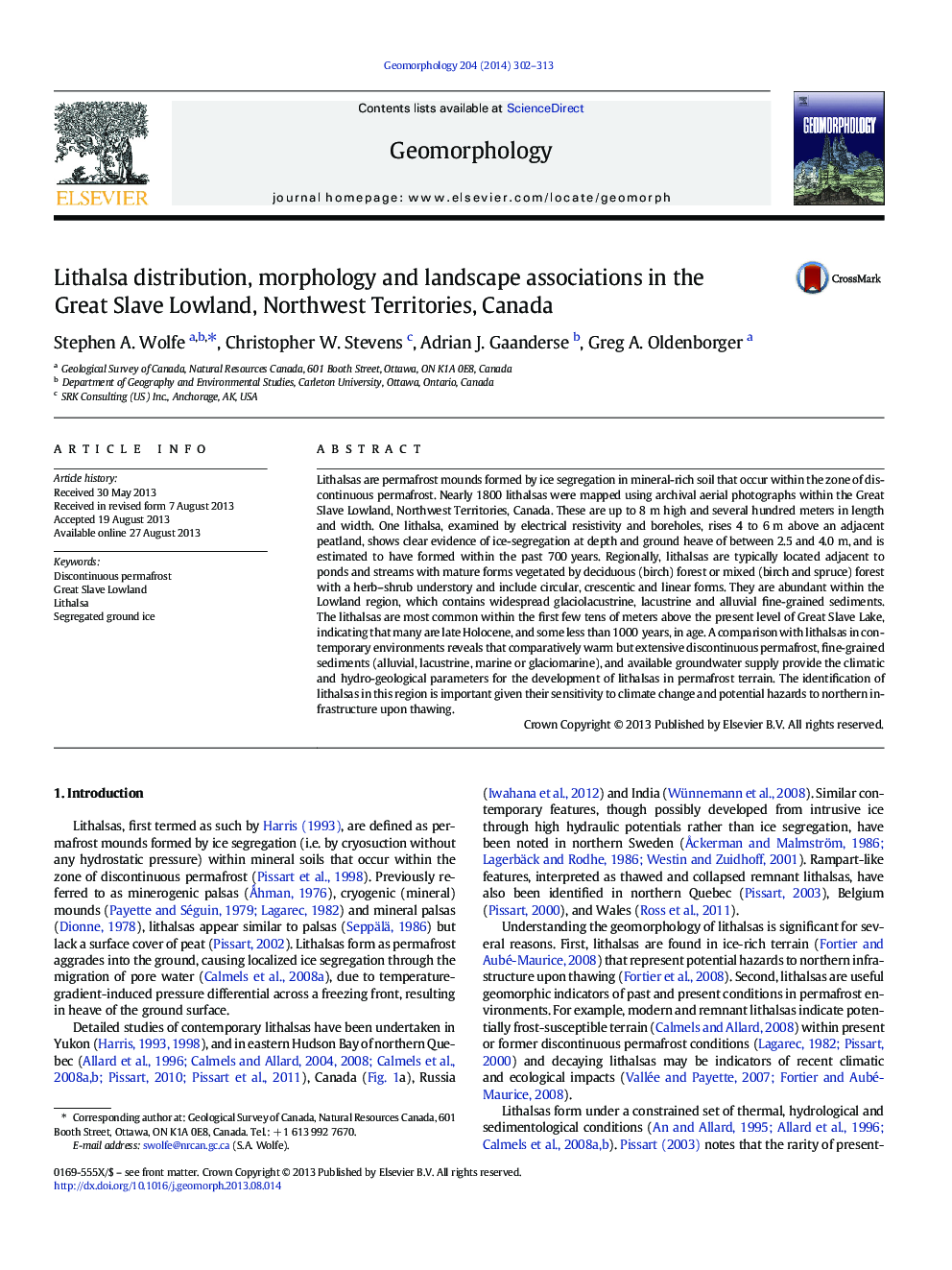| کد مقاله | کد نشریه | سال انتشار | مقاله انگلیسی | نسخه تمام متن |
|---|---|---|---|---|
| 6432737 | 1635445 | 2014 | 12 صفحه PDF | دانلود رایگان |

Lithalsas are permafrost mounds formed by ice segregation in mineral-rich soil that occur within the zone of discontinuous permafrost. Nearly 1800 lithalsas were mapped using archival aerial photographs within the Great Slave Lowland, Northwest Territories, Canada. These are up to 8Â m high and several hundred meters in length and width. One lithalsa, examined by electrical resistivity and boreholes, rises 4 to 6Â m above an adjacent peatland, shows clear evidence of ice-segregation at depth and ground heave of between 2.5 and 4.0Â m, and is estimated to have formed within the past 700Â years. Regionally, lithalsas are typically located adjacent to ponds and streams with mature forms vegetated by deciduous (birch) forest or mixed (birch and spruce) forest with a herb-shrub understory and include circular, crescentic and linear forms. They are abundant within the Lowland region, which contains widespread glaciolacustrine, lacustrine and alluvial fine-grained sediments. The lithalsas are most common within the first few tens of meters above the present level of Great Slave Lake, indicating that many are late Holocene, and some less than 1000Â years, in age. A comparison with lithalsas in contemporary environments reveals that comparatively warm but extensive discontinuous permafrost, fine-grained sediments (alluvial, lacustrine, marine or glaciomarine), and available groundwater supply provide the climatic and hydro-geological parameters for the development of lithalsas in permafrost terrain. The identification of lithalsas in this region is important given their sensitivity to climate change and potential hazards to northern infrastructure upon thawing.
Journal: Geomorphology - Volume 204, 1 January 2014, Pages 302-313